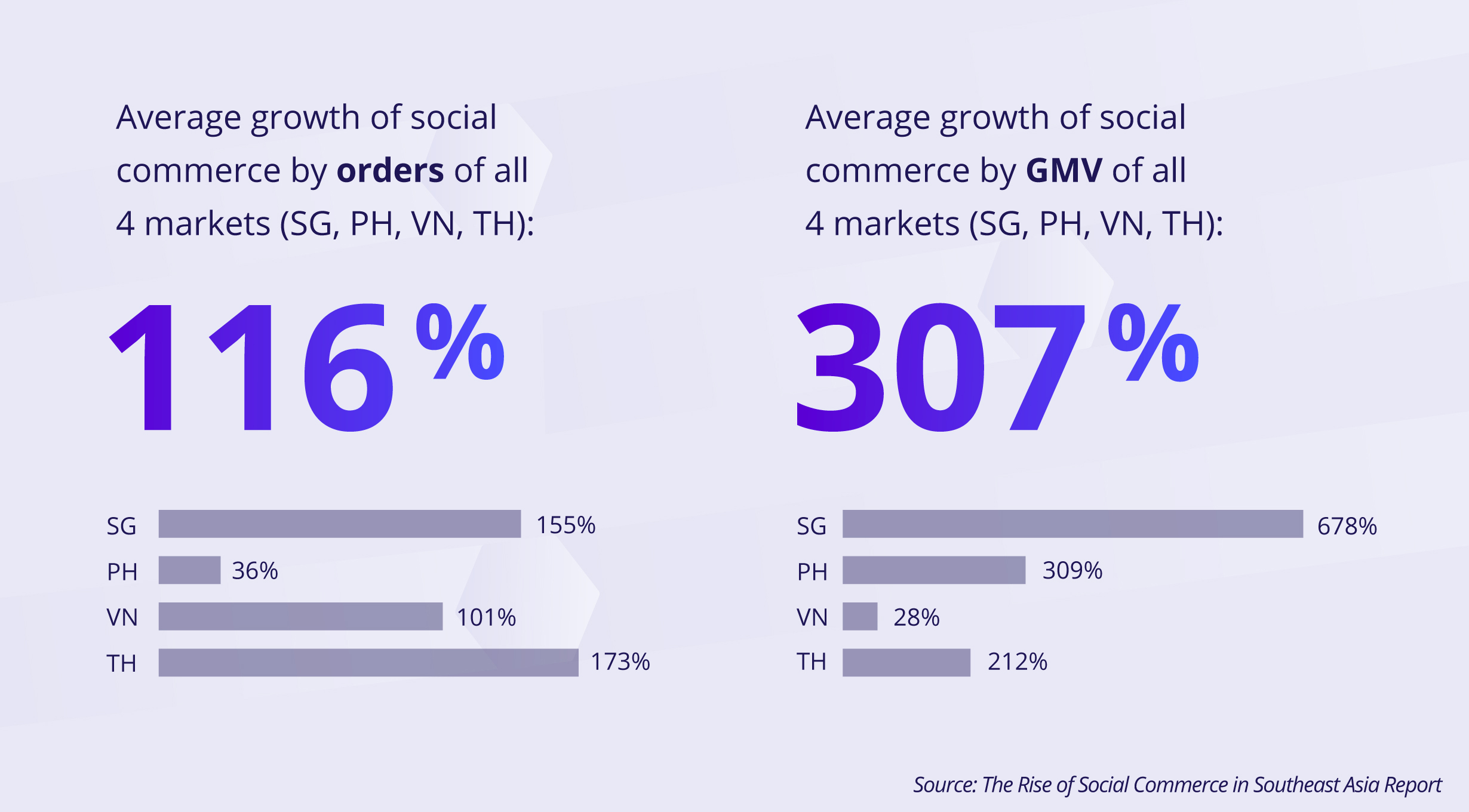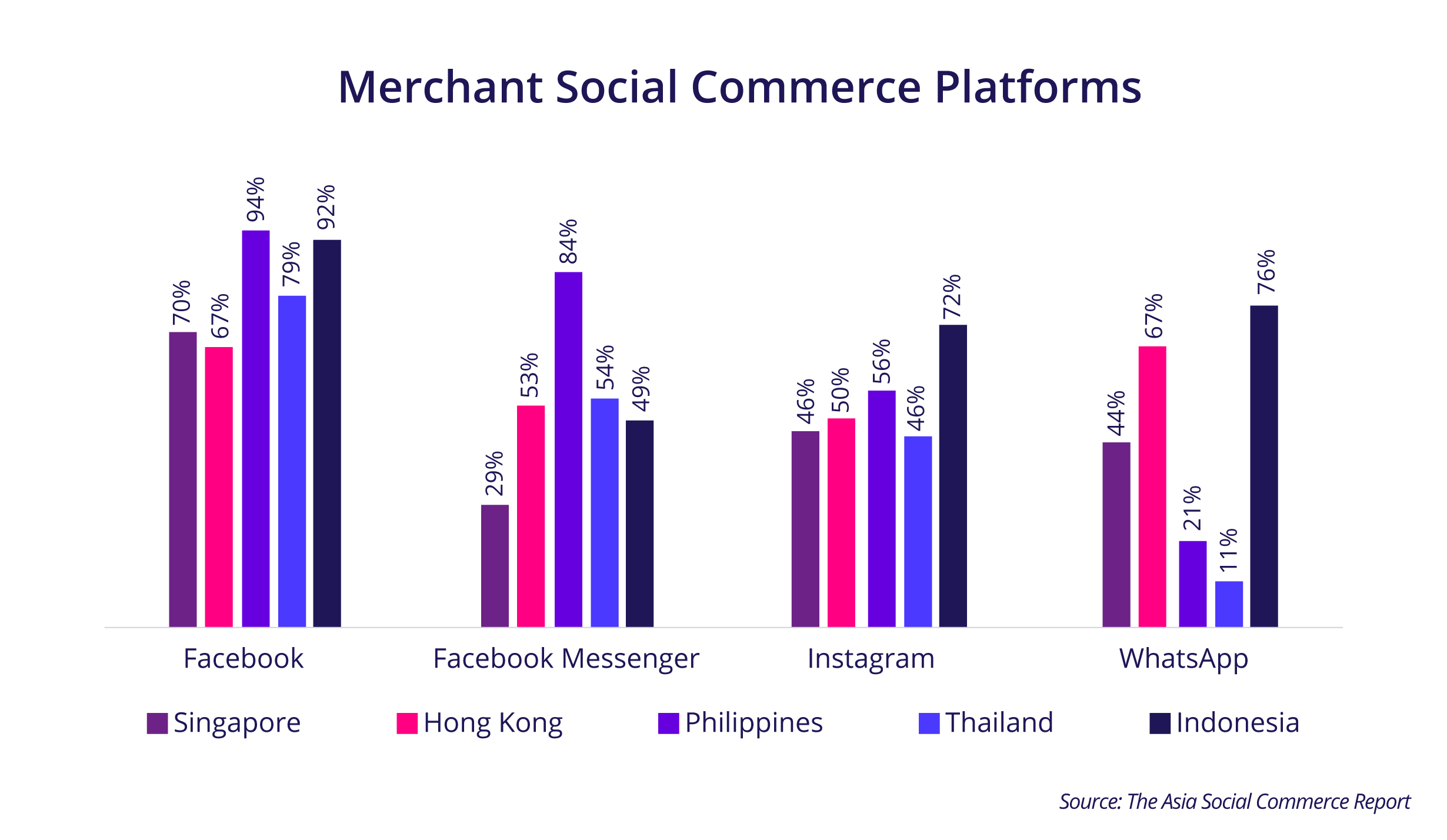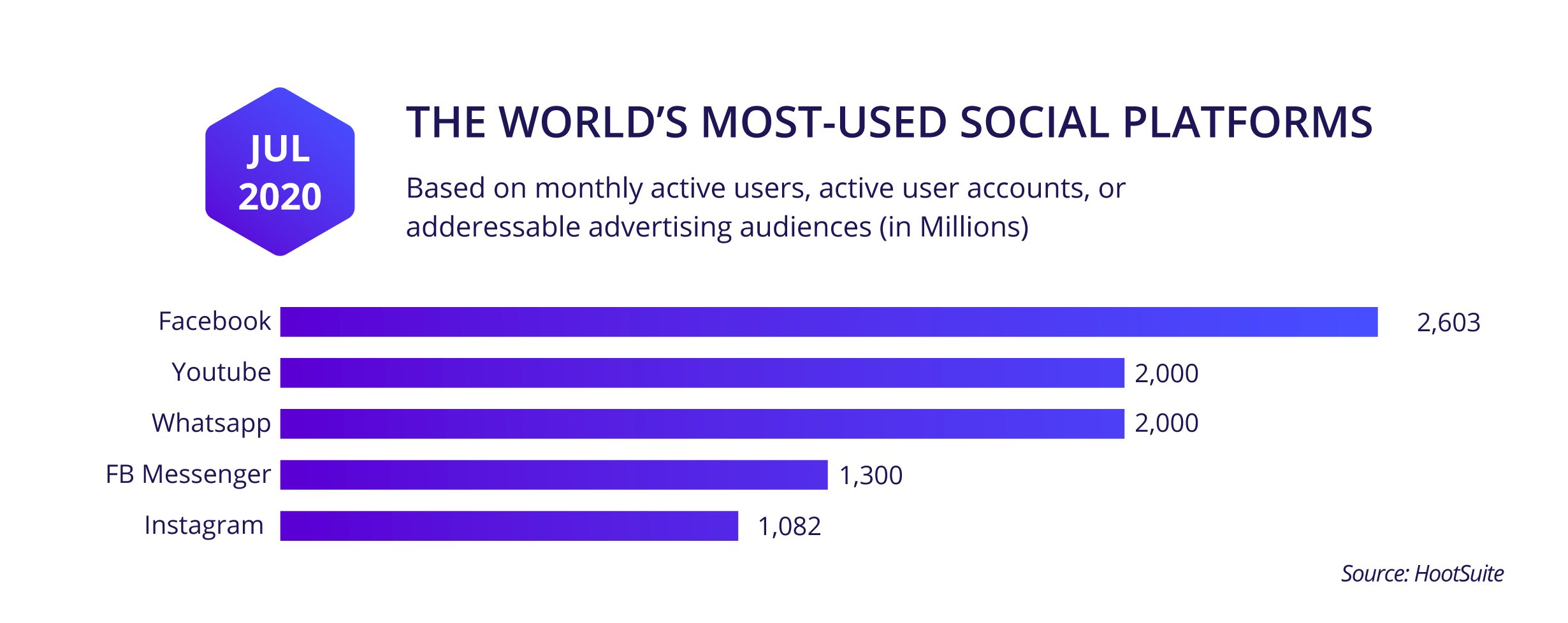
Blogs
What is Social Commerce? What Benefits do businesses get from it?

Nowadays, social networks have become an integral part of everyday life. Facebook, TikTok, Instagram, Snapchat, Twitter, Pinterest among others continue to engage users with relatable content, making them spend hours scrolling through their feed.
With almost 90% of Asia Pacific’s population surfing through mobile commerce, brands and retailers put this media to greater use, thus, inventing a fairly new concept called Social Commerce.
Earlier, businesses simply relied on social channels to improve their brand presence and connect with their customers. But, in recent years, it has become far more than that. Today, these channels have evolved to become another medium for online shopping.
For instance, your shoppers might see a pair of red boots on their Facebook page, hit “shop now” and complete the purchase then and there. Or, one of their friends has posted a story featuring their brand new smartwatch. When they click on it, they can purchase the same product right there in the app.
In a joint survey conducted by Magento and Hootsuite, almost 6 in 10 consumers claimed that one-quarter of their online shopping is influenced by Facebook and YouTube.
So, what exactly is social commerce and how can you benefit from it?
Social Commerce- Meaning and Practices
Investopedia explains social commerce as ‘The use of networking websites such as Facebook, Instagram, & Twitter as vehicles to promote and sell their products.’ Although the definition may seem complex, implementing it is pretty simple. To put it in context, as users interact with unique content, brands and businesses leverage social presence to successfully achieve their marketing goals.
These practices include—
- Offering discounts and promotions, to users who share products on their social feeds.
- Providing personalized buying options and a seamless browsing-to-checkout journey.
- Attracting users with striking graphics such as videos and images, compelling product descriptions, interesting posts, etc.
- Encouraging user-generated content such as product endorsements, reviews, and recommendations, etc.
In a nutshell, social commerce creates a mini-shopping experience directly onto the users’ social pages and motivates them to shop by interacting with the products and services. Consumers can directly buy products, or share them with their friends and followers, or otherwise review them directly on these social vehicles.
What Does Social Commerce Look Like Today
Of late, Social commerce has evolved into a powerful sales channel. Till now, brands and retailers carried eCommerce activities only through conventional media. But, social commerce has opened new opportunities that help buyers have a faster and effective route to the instant shopping experience. This way brands and businesses develop a meaningful relationship with these social users.

Source: The Rise of Social Commerce in Southeast Asia Report
Understanding the potential of social commerce, The Asia Social Commerce Report conducted by Paypal, claims that almost 80% of retail businesses across APAC sell through social media.

Taking a hint from brands and businesses, social channels keep focusing their efforts to enhance this trend.
Social media companies keep adding new capabilities and functionalities to make the shopper’s purchase journey easier than before.
To help optimize a seamless shopping experience, Instagram and Facebook have enabled checkout features directly, without letting users leave the app.
Another significant feature of social commerce is having an interactive look-book or visual catalogues. While Facebook has enabled relevant Call-To-Action buttons like ‘shop now ‘or ‘buy now’, Instagram has initiated a shop icon giving access to the latest products that brands and retailers have on their eCommerce channels.
Apart from these capabilities, businesses have started focusing on tools, software, and AI-enabled systems. User-friendly chatbots, products featured through live-selling and broadcasting, social celebrity endorsements, etc. have had a significant prominence. APAC businesses claim to have increased 13%-16% sales just by using live-streaming.

As a result, most businesses agree to social commerce being a dominating differentiator to expand their multichannel selling activities.
Benefits of Social Commerce
Although social commerce positively impacts the overall sales volume, that’s not the only benefit you can get.
1. Improved Customer Engagement
Social networks open a two-way communication channel between your business and customers. It does not just help you to promote your products, but also, enables your audience to relate with them. Users are more likely to read reviews, comments, opinions from previous customers on these channels. This further enhances the authenticity of your business and helps them make an informed decision accordingly.
Some channels go further than this, and help you build a seamless shopping experience with them. For example, Instagram has introduced Shoppable Instagram Feed that lets you tag your products collected from user generated content or your own posts and embed it directly to your eCommerce websites. So, with just two or three clicks, shoppers can easily navigate to the right product page and purchase that specific item.
2. Consistent Audience Growth
The primary aim of social commerce is to build a consistent audience. As per Kiepo’s analysis, Southeast Asia has a new user generation rate at 16.98%. These statistics clearly highlight the importance of social channels in the lives of Generation Z and how your business can expand its scope of advertising and marketing; Resultantly, exposing your sales activities to a newer user base every time.

Source: HootSuite
Since you acquire new shoppers through these channels, it is equally important you maintain the same level of relationship with every user that interacts with your business. By using the right methods to connect with them, you encourage the shoppers to resonate with your brand, and they are more likely to recommend your products.
Having a social commerce strategy therefore allows you to roll out new audience growth and consistently retain your existing consumers.
3. Increased Average Order Value
It is no secret that millennials are the primary users of social channels. Brands and businesses now understand the dynamics of the millennial market and how they need to cater to them.
Seamless shopping experience, direct checkout, interactive lookbooks, etc. are a great way to convince these users to shop more online.

Also, it increases your average order value (average amount customers are likely to spend in one go) based on the content shared on your audience’s social page, the ease of purchase cycle regardless of the device they use, what their friends and followers are shopping for these days, etc.
The point is, social media can influence users to spend more, and, you can leverage this information to curate better suggestions for your shoppers.
Furthermore, integrating your multichannel management platform with your social channels, can help you synthesize the datasets into actionable insights.
4. Higher Search Engine Ranking
It is already proven that social media not only increases traffic to your website, but also, leads to direct transactions. How? Better engagement helps you drive relevant content according to the users’ interests, thus motivating them to make frequent purchases.
This further helps you to create link build-up, recommendations, feedback and comments, etc. Such organic actions improve your digital foot-print, resulting in maximizing your search engine ranking.
5. Improved Customer Insights
Social commerce simplifies your efforts to measure and evaluate business insights. Since all these channels come with ready metrics for impressions, engagement, and reach, you are able to measure them regularly. It helps you group your audiences appropriately, thus, sharing the right content with all of them.
Depending on the objectives and KPIs you set for social commerce, you can formulate an effective plan and determine what is beneficial for your business.
A/B testing your recent initiatives, monitoring your content relevancy, studying your followers and prospects helps you in understanding specific insights.
Social commerce is a trend that is going to get much stronger in the coming years. The Social Commerce Global Market and Trajectory Report projects this trend to grow to $604.5 billion in the next seven years. It is not only going to help you expand your brand presence, but also enable you to create winning retail strategies.
So, when the competition grows, ensure that you invest the right amount of money, time, and effort to maximize your chances of success through Social Commerce.
Sources: 1 , 2 , 3, 4, 5, 6, 7, 8, 9, 10
Integrate your online channels in few steps, and try out all features of the SelluSeller
Receive the latest insights, reports, research papers, news bytes, and important announcements from Anchanto.